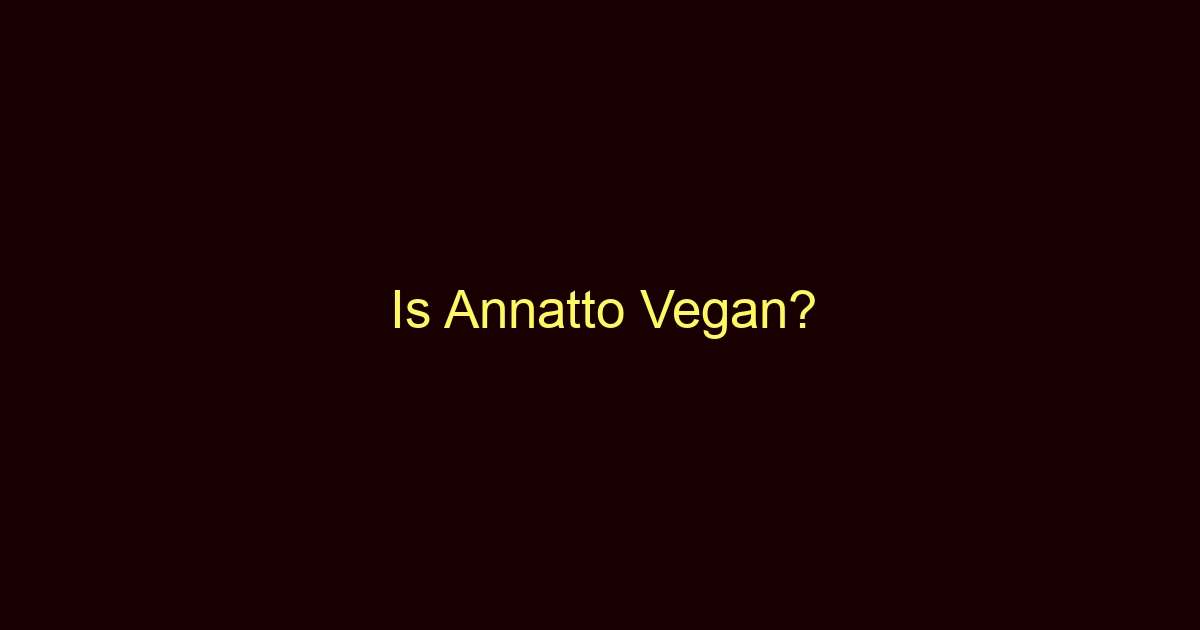When exploring the world of flavors and colors in food, you might stumble upon a unique ingredient called annatto. Known for its vibrant color and subtly sweet and peppery flavor, annatto is widely used in various cuisines. But what about its vegan status? Does it align with a plant-based diet? In this article, we’ll take a deep dive into annatto, exploring its origins, uses, and its compatibility with veganism.
What is Annatto?
Annatto, also known as achiote, is a tropical plant native to the regions of Central and South America. The plant produces spiny fruit, which contains seeds that are extracted and used for culinary and medicinal purposes. These seeds are notable for their intense orange color, which they impart to foods.
Annatto seeds have been a staple in many cultures, especially in Latin America and the Caribbean, for centuries. They have been used not only for their color but also for their subtly sweet and peppery flavor, which can add a depth of taste to various dishes. They’re often ground into a powder, turned into a paste, or infused into oil or water to be used in cooking.
What is Annatto Made Of?
Annatto is derived from the seeds of the Bixa orellana plant. These seeds contain bixin and norbixin, natural pigments responsible for the rich yellow-orange color. The seeds are harvested, dried, and then processed to be used in various forms.
To produce annatto powder, the dried seeds are ground to a fine consistency. For annatto paste, the powder is often combined with other spices or ingredients like garlic and vinegar. Annatto oil, on the other hand, is created by infusing the seeds in a cooking oil until the oil takes on the color and flavor of the seeds.
What is Annatto Used For?
Annatto has a multitude of uses in cooking due to its distinctive color and flavor. It’s often employed as a natural food coloring, giving a yellow-orange hue to various dishes. Annatto is commonly used in cheeses, such as Cheddar and Mimolette, to impart a deep yellow color.
In terms of flavor, annatto adds a subtle earthy, sweet, and peppery taste. It’s often found in Latin American, Caribbean, and Filipino recipes, featuring in dishes like achiote chicken, rice dishes, stews, and more.
What Foods Contain Annatto?
Many foods can contain annatto, especially those requiring a deep yellow or orange color. Common examples include cheese, butter, margarine, and various processed foods. Additionally, some packaged spice mixes and even certain cosmetics may contain annatto for its color.
Is Annatto Vegan?
Yes, annatto is vegan. It’s derived purely from the seeds of the Bixa orellana plant, with no animal products or byproducts involved in its production. It’s entirely plant-based and fits comfortably within a vegan diet.
However, while the annatto itself is vegan, it’s important to note that it’s often used in foods like cheeses and butter, which are not vegan. Always check the other ingredients when buying products colored with annatto.
Can Vegans Eat Annatto and Why?
Yes, vegans can consume annatto. As a plant-derived product, annatto aligns with the principles of a vegan diet. It can be a useful ingredient in a vegan kitchen, adding color and flavor to a variety of dishes.
Keep in mind, though, that while annatto is vegan, the foods it’s used in may not be. Always check the ingredient list for any animal-derived ingredients.
Is Annatto Safe?
Annatto is generally recognized as safe by the Food and Drug Administration (FDA). However, in rare cases, some people may have an allergy or sensitivity to annatto, causing symptoms like hives or food intolerance. If you suspect you have a sensitivity, it’s best to avoid it or consult with a healthcare professional.
Final Thoughts
In conclusion, annatto is a unique plant-based ingredient that can be a colorful and flavorful addition to your food, and it’s entirely vegan-friendly. It’s a testament to the fact that plant-based foods can be vibrant, versatile, and full of flavor. However, always ensure to check the labels of products colored with annatto for any hidden non-vegan ingredients.

